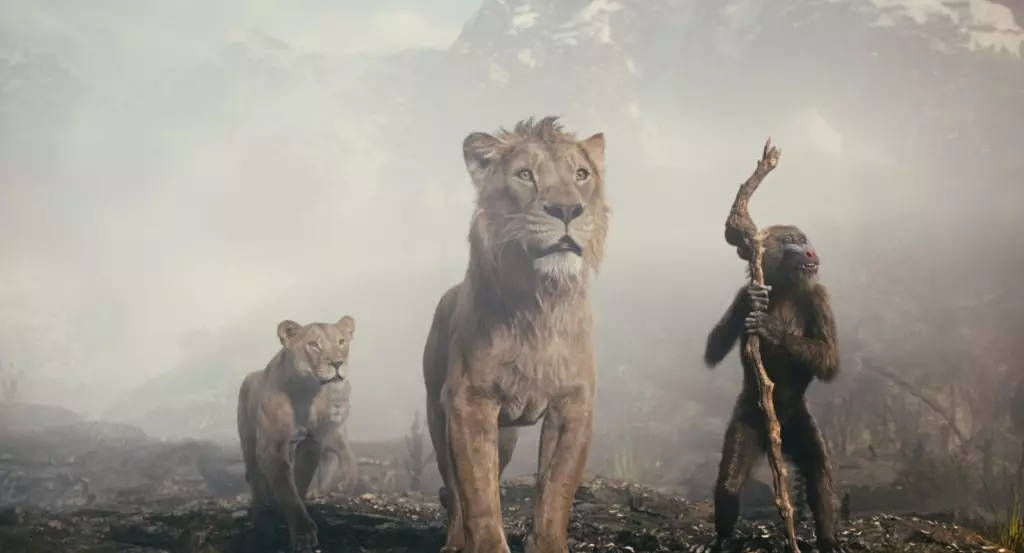In an ever-evolving cinematic landscape, the power dynamics between newly released films can shift dramatically within the span of a few weeks. Disney’s “Mufasa: The Lion King,” for instance, experienced a somewhat disappointing opening weekend, collecting $35.4 million at the domestic box office—falling significantly behind Paramount’s “Sonic the Hedgehog 3,” which garnered an impressive $60 million. Yet, as the dust settled and audiences continued to flock to theaters, Mufasa emerged as a strong competitor, proving that initial numbers may not always reflect long-term success.
As the figures were tallied after 45 days in theaters, both films closed the week with cumulative totals remarkably close: “Mufasa” at $229.5 million and “Sonic the Hedgehog 3” at $230.5 million. This unexpected turn of events serves as an important case study in box office performance, particularly in how audiences connect with narratives over time. Mufasa’s underdog story is emblematic of a growing trend where films, especially those associated with well-established franchises, hold the potential to gain traction weeks after initial release—a phenomenon that may reflect both effective marketing strategies and audiences’ evolving preferences.
One key factor contributing to Mufasa’s steady performance lies in its strategic decision to adopt a longer theatrical window. By maintaining an extended period in theaters before transitioning to Premium Video on Demand (PVOD), set to launch on February 18 via platforms like Amazon Prime Video and Apple TV, the film created sustained anticipation among viewers. This approach allowed Mufasa to dominate coveted IMAX and Premium Large Format (PLF) screens, thereby cultivating a consistent audience over its theatrical run. In contrast, “Sonic the Hedgehog 3,” which opted for a shorter theatrical release before hitting PVOD on January 21, raises questions about the implications of shorter windows on box office longevity.
Global Performance and Financials
Globally, “Mufasa” has reached an impressive total of $652 million. While this figure pales in comparison to the original “Lion King,” which amassed a staggering $1.66 billion in 2019, it nonetheless exceeds industry expectations for a film with a production cost of $200 million.
Conversely, “Sonic the Hedgehog 3,” with a lower production budget of $122 million, grossed $462.5 million worldwide. This financial analysis underscores the notion that box office numbers should not solely dictate a film’s value; rather, profitability and long-term brand potential emerge as critical variables in assessing a film’s impact.
Looking ahead, the home entertainment market offers another layer of engagement for both films. For Mufasa, the impending release on Blu-ray, DVD, and digital platforms scheduled for April 1 shines a light on the eagerness with which fans await additional content. Included in the home release are compelling features such as a full-length sing-along version, behind-the-scenes insights from director Barry Jenkins, and musical discussions with Lin-Manuel Miranda. Such offerings deepen the audience’s experience, fostering a connection that could pave the way for future viewership and continued fandom.
Moreover, “Mufasa” extends beyond entertainment; it intertwines its narrative with vital themes of wildlife conservation. Disney’s partnership with the Lion Recovery Fund emphasizes an investment in the protection of lions in their natural habitats. By melding storytelling with social responsibility, Mufasa appeals to contemporary viewers’ sensibilities, ensuring that the film resonates on both entertainment and ethical fronts.
While Mufasa’s initial box office performance may have left some critics concerned, its eventual success illustrates a vital lesson in resilience. By committing to a strategic, long-term vision rather than succumbing to short-term pressures, Disney has carved a path for Mufasa to endure in the hearts of audiences. In the end, the lion may not only reflect a cinematic legacy but also emerge as a champion of conservation and storytelling, ensuring that its roar continues long after the credits roll.

